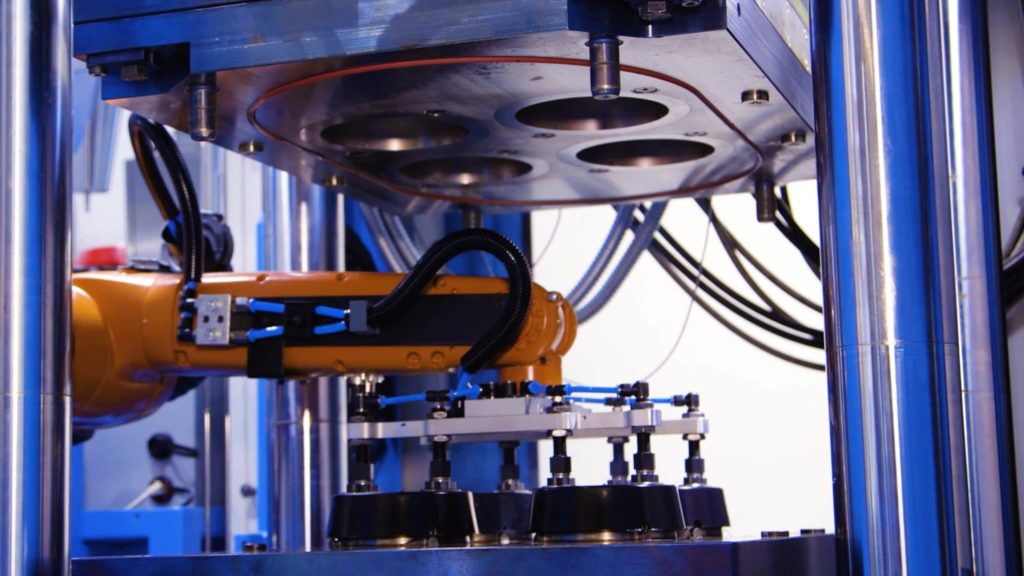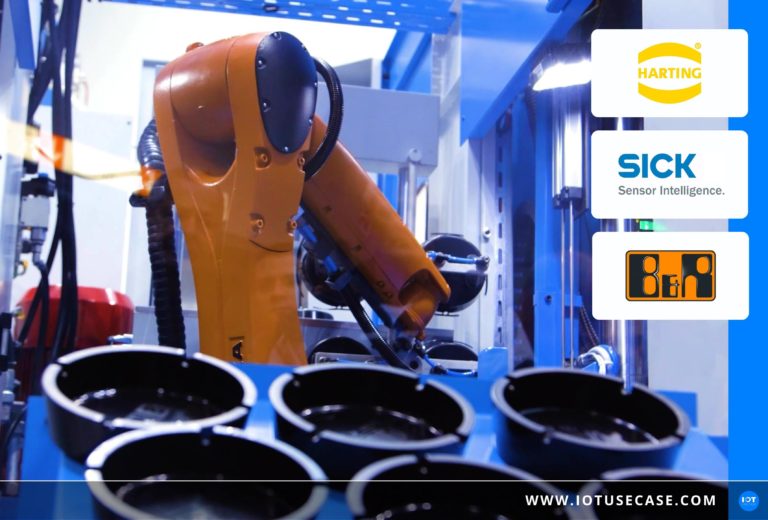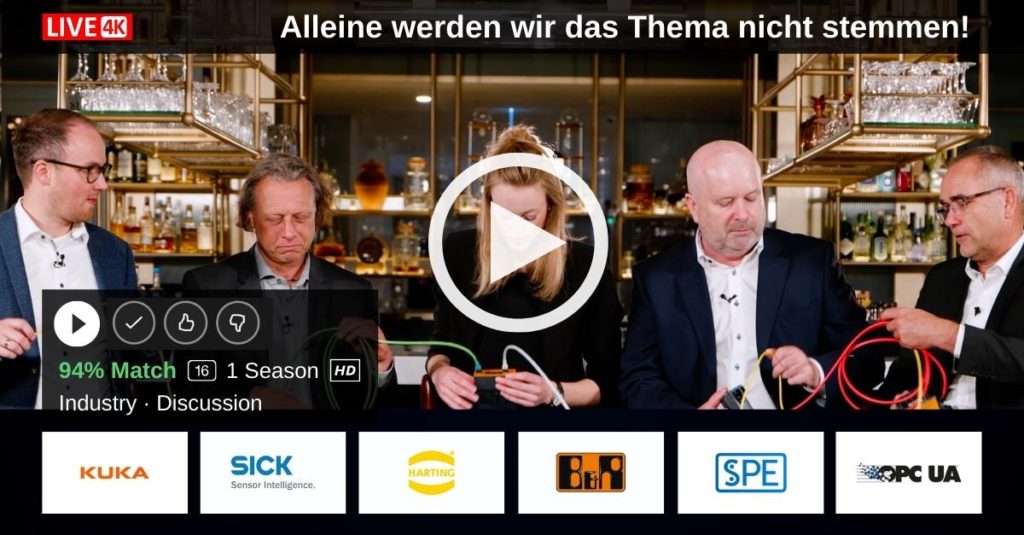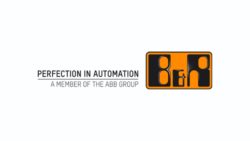The networking of robots presents users and the industrial automation world with new challenges. Above all, the linking of operational technology (OT) with IT requires a new connection technology: On the one hand, the bandwidth requirements of the machine data are low, on the other hand, a real-time capable connection for control information is often required. A scalable future with IIoT can only succeed if cross-manufacturer networking becomes possible – a call for the industry.
The challenge: Communication with the IT level not possible across manufacturers
Robots have a very wide range of applications – in the automotive industry, the electronics sector, in metal processing or in the manufacture of consumer goods. Digitalization allows and requires access to machine data for outsourced services on edge devices or in cloud services.
KUKA is taking this approach: the manufacturer is making robot data usable for specific applications such as asset management, troubleshooting, condition monitoring or diagnostics. With specific cloud applications, customers achieve maximum availability and optimum utilization of equipment. At a manufacturer of electronic devices, for example, they are used together with injection molding machines. Robot, machine and further tools for grinding, deburring or milling form an integrated production station. The robot acts as a “man in the middle”, removing the manufactured workpiece from the machine and taking it to the tools for finishing. For example, the robot guides the component along a tool to deburr it. Precise timing is important here, for which all components, including the robot, must communicate with each other. Until now, manufacturer-specific, hardware-bound interfaces have been used. The operational technology (OT) used is computer-based, but not easily networked with IT systems.

Mit dem Laden des Videos akzeptieren Sie die Datenschutzerklärung von YouTube.
Mehr erfahren
KUKA Robots for Plastics Industry
Providing customers with digital service offerings requires good communication between all levels and systems at the customer site. The challenge is that such convergent networks are not yet universally available today. So currently users cannot access all devices in the OT from the IT layer. The multitude of proprietary fieldbuses prevents “the last mile” to data from the robot, devices and machines. This is because many companies want to analyze machine and process data with IT applications. You can use it to control the supply chain, increase product quality and optimize machine runtimes. This requires standards on the shop floor that guarantee secure, reliable, manufacturer- and platform-independent communication. They promote close cooperation between manufacturers and end users. Only in this way can scalable networking succeed.
The solution: New technologies and partnerships create standardized and cross-manufacturer networking
Basically, the solution is based on general IIoT principles: Sensors or interfaces to existing PLCs send the data via cable or radio to a gateway, which establishes the connection to the Internet and sends the sensor data to a cloud platform. The gateway is often a so-called edge device with its own computing capacity, for example to filter and compress data.

- Intelligent sensors for industry can provide additional information for the process or digitization of a machine in addition to the primary sensor functionality. For example, there are compact 3D sensors for collision monitoring that determine size and shape in addition to the actual object position. This allows a robot to regulate its working speed and adapt to the environment – for example, when removing an injection-molded component. These sensors determine values such as image information, temperature, humidity or vibration and send the machine and process data to the cloud.
- The prerequisite for this is an efficient cable route connecting the sensor to an IIoT gateway. Harting uses Single Pair Ethernet (SPE) as cabling. The new industry standard allows a maximum bandwidth of one gigabit per second with only one pair of wires. For comparison: In IT, 8-core cables are common for this bandwidth. SPE is a robust and material-saving Ethernet cabling system that is intended to replace the fieldbuses commonly used to date in the long term.
- The standardized OPC UA over TSN, which extends the Industry 4.0 standard OPC UA with real-time capabilities, serves as the transmission protocol. The “Open Platform Communications Unified Architecture” offers cross-vendor communication from the sensor via gateways to the processing IT systems in the backend or in the cloud. TSN makes OPC UA real-time capable here. OPC UA is an important prerequisite for end-to-end, secure networking from the field level to the cloud.
The result: Standardized value creation for the future
With the miniaturized sensors, the users of the robots and machine tools receive significantly more data than was previously possible. The small size as well as the uncomplicated cabling also allow the retrofitting of older industrial robots and machine tools. This allows the using companies to analyze their machinery as well as their processes.
The use of SPE makes such a system much more cost-effective than traditional Ethernet cabling for larger companies with multiple, large-scale plants. The typical bandwidth of Industrial IoT applications is low compared to IT networks. Therefore, multi-conductor Ethernet cables are too costly, especially in view of the raw material prices for copper; single-pair cabling is sufficient.
At the same time, the OPC UA standard enables easy connection between OT and IT. Modern Industrial IoT applications thus process any kind of machine and process data. Information gathering alone, for example, makes it easier for companies to manage the supply chain and respond to anomalies. In addition: TSN as a real-time protocol with minimal latency also allows the robots or other components on the shop floor to be controlled remotely with an MES (Manufacturing Execution System).







